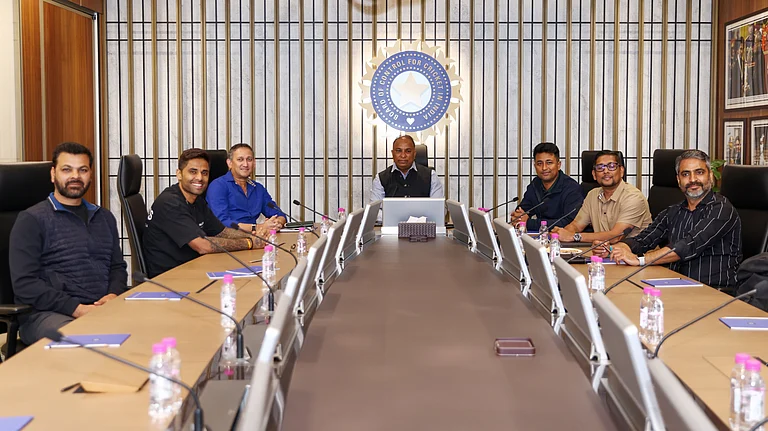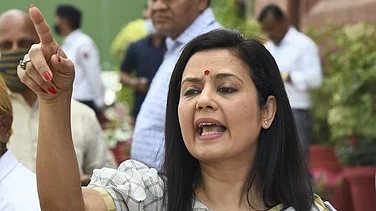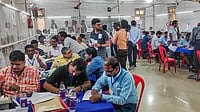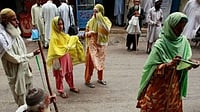Almost two months from now, the national capital of the country is likely to be engulfed in thick smog, as the trend has shown over the past few years with the onset of winter months and post Diwali celebrations. Delhi Chief Minister Arvind Kejriwal announced the winter action plan today, September 29, which will be implemented from October to December.
In November 2016, after Delhi witnessed one of its worst incidents of pollution-induced smog, the Supreme Court directed Delhi and NCR authorities to form a plan to deal with air pollution and subsequently the Ministry of Environment, Forest and Climate Change in early 2017 came out with the Graded Response Action Plan (GRAP), which involved coordination between multiple agencies in Delhi to activate/reactive pollution control measures corresponding to increasing Air Quality Index (AQI) levels. Since then, these plans are being followed every year, and whenever the air quality dips from ‘poor’ to ‘very poor,’ measures listed under both these sections are to be followed.
This year's plan
Announcing the plan, Kejriwal said the Pusa biodecomposer that prevents stubble burning will be sprayed on 5,000 hectares of farmland this year against 4,400 hectares last year. The biodecomposer, which is developed by the Indian Agricultural Research Institute (IARI) here, is a microbial solution that can turn paddy straw into manure in 15-20 days.
The government will also deploy 530 water sprinklers to prevent dust pollution and 385 teams will check vehicles' pollution certificates and prevent the plying of overage cars. The chief minister also urged people to download the Green Delhi mobile application and report any pollution-causing activity to the government.
Previous winter action plans
Apart from the GRAP, the Arvind Kejriwal-led government also releases 'winter action plans' that include 10-15 measures to curb pollution. It was in 2021 when the Delhi government drafted a 10-point winter action plan to combat air pollution, based on data from the last five years to predict ‘hotspots’ two weeks in advance. Several environment experts lauded the government’s move to plan ahead of the annual pollution spike and use historical data, rather than reacting once the AQI levels had already peaked.
The plan focussed on areas such as stubble and garbage burning, vehicle and dust pollution, hotspots, industrial pollution, upgradation of Green War Room and Green App, dialogue with the central government and neighbouring states, and detailed advisories for the common public and their daily activities.
The year 2021 was the time of the farmers’ protests. It was also the time when the city did not see even one good air quality day until October. This meant that the Commission on Air Quality Management (CAQM), which has been overlooking the implementation of GRAP from 2021, had to devise a plan to prevent stubble burning without levying a fine on the farmers who were agitating against the three infamous farm laws months before the Punjab state elections.
In 2022, Kejriwal announced a 15-point ‘winter action plan’, which included using anti-smog guns, monitoring of dust mitigation measures at construction sites and enforcing measures that were already in place with the previous action plan, like the ban on firecrackers.
Construction sites of 5000 sq metres and above had to register on a web portal for real-time dust control monitoring. A total of 586 teams were formed to monitor construction sites. Anti-smog guns were made compulsory at construction sites of over 5,000 sq metres.
The environment department also used the new real-time source apportionment system which helps identify the sources of air pollution in real time. A revised GRAP was implemented in 2022, as per which, authorities would initiate restrictions based on AQI values rather than PM2.5 and PM10 concentration.
What this meant was that while previously, measures were introduced after pollution concentrations reached a certain level, in 2022, measures were pre-emptively introduced and kicked in based on forecasts in an attempt to prevent the air quality from deteriorating further. For this, the CAQM relies on air quality and meteorological forecasts by the Indian Institute of Tropical Meteorology (IITM) and the India Meteorological Department (IMD).
As per experts, this “finer” version of GRAP could prevent the air quality crisis in Delhi-NCR after Diwali. “Stubble burning peaks in November and Diwali is on October 24. This is a crucial factor. So, it may not lead to a severe situation on Diwali provided all other measures are followed strictly…The government has provided more machines for the management of stubble this year. We hope for better results,” Dr Mahesh Narang, the head of the farm engineering department at Punjab Agricultural University told PTI.
Delhi witnessed a drop in the air pollution levels in the 2022-23 winter season due to the strict implementation of the 15-point action plan and a Graded Response Action Plan, Environment Minister Gopal Rai claimed earlier this year.
“Severe air quality days have been reduced by 77 per cent. The government's efforts, including the ban on petrol and diesel vehicles older than 15 years and 10 years, promotion of e-vehicles, suspension of construction work when air quality deteriorated, expansion of green area, ban on firecrackers and stubble burning, creation of a green war room, and the use of PNG (clean fuel) in industrial units, have improved the air quality,” Rai said.
For this year's plan, the government has identified several pollution hotspots and that specific winter action plans will be prepared for each hotspot. Some of the hotspots are Anand Vihar, Wazirabad, Vivek Vihar, Wazirpur, Ashok Vihar, Dwarka, Jahangirpuri, Rohini, Bawana, Narela, and Mundka. The government is expected to attempt a technique known as cloud seeding to induce artificial rain, with the hope to curb pollution.


























